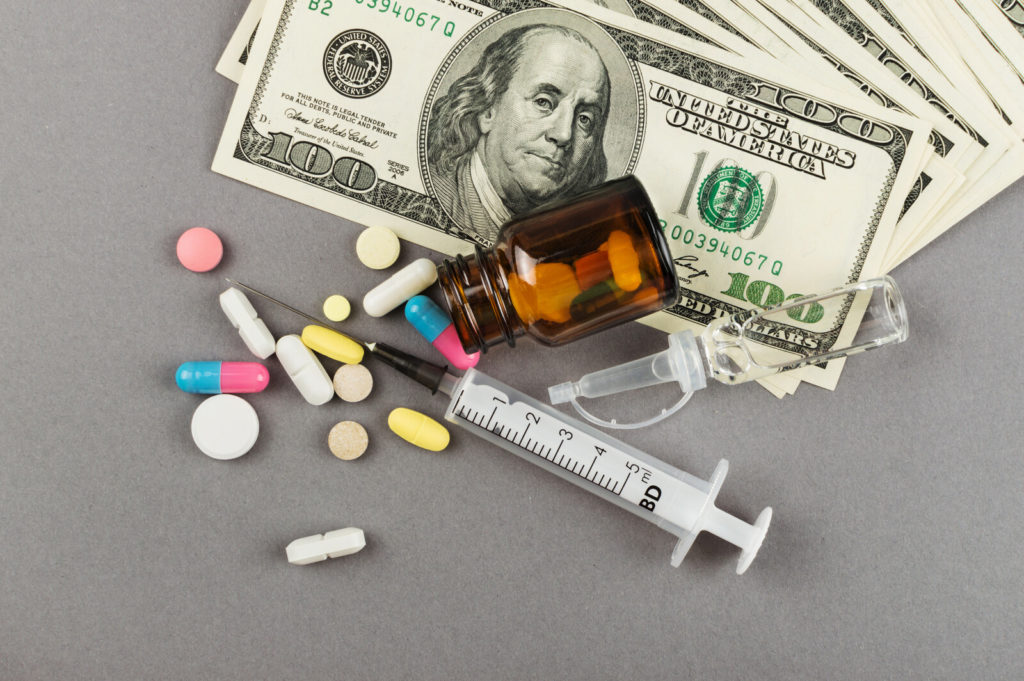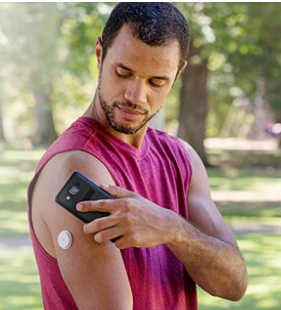
I’m a healthy 48-year old anesthesiologist. At least I was healthy until an unintentional 20 pound weight loss over the summer, accompanied by unquenchable thirst, insatiable appetite, blurry vision, and the bathroom frequency of an elderly prostatic. My lab workup would reveal a high fasting blood sugar of 310 mg/dL, a very high hemoglobin A1C >14, positive urine ketones (showing that my body was breaking down muscle to use for energy), low levels of C-peptide (a byproduct of natural insulin production, revealing that my pancreas was making little insulin), and a glutamic acid decarboxylase (GAD-65) antibody level that was off the charts (which correlates with Type I diabetes due to autoimmune pancreatic islet cell destruction). So, today, I’m suddenly an insulin-dependent diabetic with a relatively rare case of Late Autoimmune Diabetes of the Adult (LADA). That will definitely alter your daily schedule,… as well as immediately put you in the market for a fair amount of pharmaceuticals and medical supplies.
Now that I have my diet well-controlled with careful carbohydrate intake, resulting in a relatively low insulin requirement, I’ve started to look for ways to improve the diabetic lifestyle impediments that can interfere with a busy O.R. schedule and active life. My initial daily regimen has included four glucose checks a day (involving meters, lancets, test strips, swabs, and cotton balls), and up to four insulin injections: long-lasting NPH insulin twice daily as a base, with a sliding scale of short-acting regular insulin at meals and bedtime – all with syringes and vials. That’s a lot of stuff to manage and carry.

I’m transitioning to a single daily injection of ultra-long lasting Triseba® (insulin degludec), supplemented with a once or twice daily dose of Novolog® regular insulin as needed for fine-tuning: all by easy-to-manage injection pens. The next step is to convert from all the finger stick checks to a more streamlined glucose monitoring system. After looking at the few continuous (and flash) monitoring options out there, I’ve purchased the Freestyle Libre® system. It consists of a small 14-day subcutaneous sensor which attaches to your skin, transmitting your glucose level to a hand-held scanner, or to an app on some cell phones. That can save a lot of finger sticks, as well as reduce the daily bulk and transport of required equipment.
The savvy reader might have already questioned how much all of this stuff costs. The short answer: it ain’t cheap. Goodrx.com will show you that the most basic insulin vials of regular and NPH can cost $150 each on the low end, with other types of insulin running $300 to $1000 each per vial or pen. The other necessary basic supplies can add $100 per month or more. Finding out the costs and insurance coverages, formularies and deductibles, co-pays and participating pharmacies is an exercise in frustration – and for the patient reader, that’s where this article is headed.
When I priced out the Freestyle Libre system with a recommended medical supply company, applying my private insurance coverage with the $3,000 deductible, the costs to me for Year One would have been:
Handheld reader – $300 each, one for work and one for home: $600
14-day sensor – $193 each x 26 (12-month supply): $5,018
So, of the $5,618 subtotal, insurance would pick up the remaining $2,618 after my $3,000 deductible. I believe that my co-pay for the sensors after the deductible was met was quoted around $70 each. That would leave me with another $900 or so for roughly 6-months worth of the “discounted” sensors.
That all seemed a little pricey to me for a technology that cannot be more complicated than my Android cell phone, Chromebook laptop, or Playstation 4 – any of which cost me about the price of one single, quoted glucose reader – in the neighborhood of $300. So, I started looking for direct pricing. Goodrx.com priced me readers and sensors for about $70 and $55 each, respectively. That calculates to a Year One cost of roughly $1,600 – by paying out-of-pocket at Walgreens. Hmmmm… $1,600 versus $5,600. For the exact same products. A FOUR THOUSAND DOLLAR DIFFERENCE! A 350% markup, if my math is correct.
So, it appears that I (coupled with my employer/group contribution) can pay roughly $6,000 per year in insurance premiums for health care “coverage,” then a $3,000 deductible before that coverage takes effect, at which point I may still be liable for co-payments… and then I get the privilege of being in the covered network for which I will pay a markup of unnecessary, additional thousands of dollars. A 350% tax? Again, the savvy reader might question where all that money goes, if just directly paying for a more transparently-priced medical service or supply can be had so much more affordably?
The thoughtful among us might also question:
What services are insurance corporations actually providing today?
Has the catastrophic medical insurance market morphed into an expensive, non-transparent, buyers’ club which surreptitiously raises prices for everyone while financially benefiting a potentially useless class of interlopers by skimming excess profits… perhaps to the tune of many billions of dollars per year?
What are the economic distortions in the medical market when true costs are difficult to acquire?
What is the cost of supporting the streams of third-party individuals, entities, organizations and bureaucracies that stand between a patient-consumer and a physician end-service, medical supply service or drug manufacturer?
What role is the FDA playing in encouraging or inhibiting competition, price transparency, and corporate protectionism?
What if you and your doctor have no idea what anything in the system really costs?
What if your doctor would happily provide you a service at a fraction of what your insurance “coverage” bills you?
What if your insurance company profits more in the health care transaction than does your physician?
What if she would be happy to charge you far less in a direct transaction… rather than participate in an awkward “provider-insurance corporation-subscriber” threesome of purposefully disjointed communication and secrecy?
What does it mean that in order to essentially avoid being defrauded of large sums of money, a patient like myself must spend many hours searching for solutions outside of the accepted “system” which enables that fraud?… And how much more difficult must it be for patients without health care experience to maneuver through that system?… Especially if sick and financially disadvantaged?
This physician-patient, for one, has been awakened to the power of price transparency and interloper-reduction. Health care “coverage” is, admittedly, very expensive. In contrast, what do the actual medical services and supplies cost, absent the interference and markup? What if we could cut the price tag of our health care by 350% just by pulling the costs out into the sunlight and eliminating the unnecessary intermediaries in exchange for direct and transparent care models?
Although a minority of physicians and patients operate in a freer medical market, there are well-established and growing options in play that bypass opaque, expensive and unnecessary obstacles to affordable medical services. Direct Primary Care (DPC) practices like Atlas MD and 1,000 others around the country; transparently-priced surgery centers like Surgery Center of Oklahoma and many others; advocacy groups like the Free Market Medical Association; Liberty and other health shares; laboratory, radiology and pharmacy service companies that offer transparent and discounted prices; and comparison marketplaces like MediBid to help you find them… all are growing service providers responding to a demand for more transparent, understandable and affordable medical services. By putting in a few hours of research as I did, you may be able to save yourself thousands of dollars in unnecessary medical costs. Few would deny that health care “coverage” is expensive, but medical services do not have to be.
